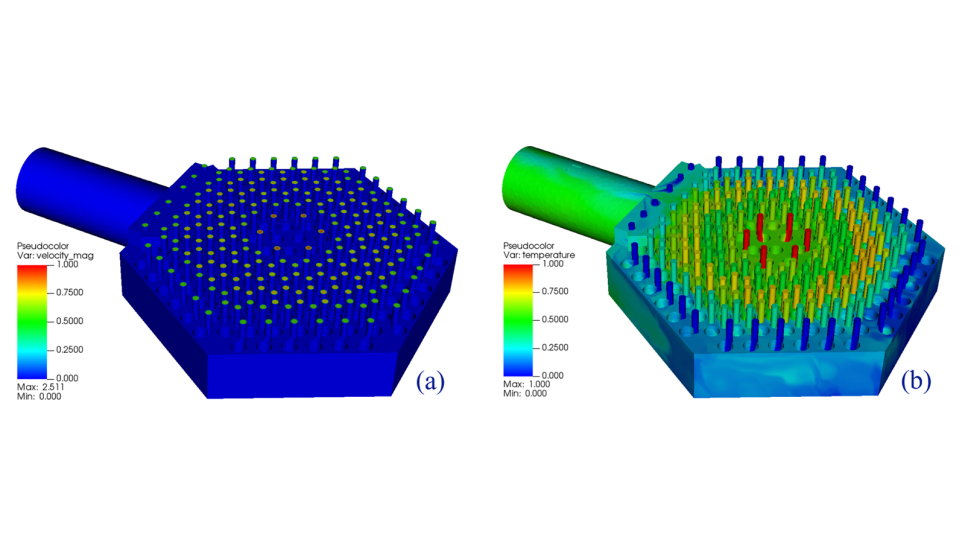
Velocity and temperature distributions across the lower plenum surfaces of the HTTF.
Using state-of-the-art computational tools developed by the Exascale Computing Project and the Nuclear Energy Advanced Modeling and Simulation Program on leadership-class computing facilities, this team sets out to use Computational Fluid Dynamics (CFD) to accurately predict turbulent fluid flow and heat transfer phenomena in a wide range of nuclear power applications.
Advanced nuclear power relies on next-generation designs that go far beyond the currently operating light-water-cooled reactor (LWR) fleet. Every commercial nuclear power plant currently operating in the US is an LWR. While the use of water as a coolant has benefits – such as very well understood fluid properties and heat transfer behavior – there are more advanced designs which can achieve higher efficiency and greater safety margins. The advanced reactor designs proposed as the next generation of nuclear power require significant investigation into the proposed mechanisms of fluid flow and heat transfer to ensure that these claims are met to help achieve energy independence using low-carbon or carbon-free sources.
Computational Fluid Dynamics (CFD) is playing an increasingly important role in the design of advanced nuclear reactors. With the capabilities of the exascale computing era, full-core highfidelity CFD simulations are now a reality offering greater insight into the fluid flow and heat transfer behavior of these reactors than ever before achievable. Using state-of-the-art computational tools developed by the Exascale Computing Project and the Nuclear Energy Advanced Modeling and Simulation Program on leadership-class computing facilities, CFD can provide a unique capability that has been consistently demonstrated to accurately predict turbulent fluid flow and heat transfer phenomena in a wide range of nuclear power applications.
High-fidelity simulation capabilities will be applied to analyze multiple advanced reactor designs and the generated data used to inform models implemented in fast-running tools in use by the nuclear industry, thereby accelerating the deployment of advanced nuclear power, including liquid metal cooled fast reactors, pebble bed reactors, and high-temperature gas-cooled reactors.